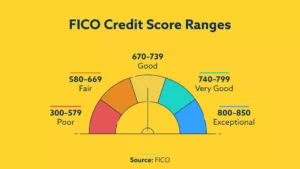Independent contractors, side hustles and gig workers are eligible for $600 a week unemployment payments under the Cares Act.
The expanded eligibility to cover independent contractors, gig workers and other self-employed people, runs until the end of the year (12-31-2020).
Plus, since unemployment insurance is a federal-state program, your weekly payment will also include the amount your state pays.
Typically, these types of workers are not eligible for benefits. But due to the extraordinary circumstances caused by COVID-19, the Federal Pandemic Unemployment Assistance Program (PUA) extends unemployment benefits.
The total reported laid-off workers has risen to over 33 million in the eight weeks since the COVID-19 outbreak.
The Cares Act allows self-employed to apply for unemployment that have experienced:
- Loss of work
- Hours significantly reduced
- Business significantly reduced
- Inability to generate your regular income due to COVID-19
Generally, individuals who receive a 1099-MISC for their labor will not qualify for regular unemployment compensation, and thus may be eligible for PUA.
Some gig workers that applied earlier found their states unprepared for the applications. But most states are reporting their systems are up and running now. Check out the below list of state websites to apply.
State unemployment systems are overwhelmed but apply anyway…don’t let this opportunity pass you.
How much unemployment can the self-employed get
PUA ($600 per week until July 31, 2020) + benefit amount your state calculates based on your prior 2019 work income. You state’s unemployment office will review your 2019 income history and use a calculation to determine your benefit amount. Some states are more generous than others with Mississippi paying the lowest, up to $213/week, and Massachusetts the highest, $555/week.
How long can the self-employed get unemployment
PUA from the federal government may cover periods of unemployment up to 39 weeks. Plus PUA benefits can be paid retroactively for periods of unemployment beginning on or after January 27, 2020. But the additional $600 per week benefit ends July 31, 2020.
You can apply for PUA even if you are currently working part-time
You should apply for unemployment even if you are still getting some work. PUA is also available to independent workers, gig workers and freelance workers who have lost some income but who are still getting some work.
Tips for self-employed to complete unemployment application
Have the following information ready when applying:
- Your Social Security number
- If you are not a citizen of the United States, your A Number (USCIS Number)
- Your residential address
- Your mailing address (if different from residential address)
- Your telephone number
- Your email address
- Your birth date
- Your earning records for 2019, for instance: 1099 forms; pay stubs; or, bank statements
- The social security number(s) and date(s) of birth for your dependent child(ren)
- If you want to use direct deposit for payment, your bank account and routing numbers
State-by-state list of where to apply for PUA unemployment benefits
Keep in mind most state offices have been overwhelmed with the number of applicants but you have to apply for unemployment through your state to get the additional $600 per week. These offices are not staffed to handle the volume of claims they are processing. There are slower processing times but keep trying.
Alabama – Learn more about Alabama unemployment resources
Alaska – Learn more about Alaska unemployment resources
Arizona – Learn more about Arizona unemployment insurance
Arkansas – Learn more about Arkansas unemployment insurance
California – Learn more about California unemployment insurance
Colorado – Learn more about Colorado unemployment insurance
Connecticut – Learn more about Connecticut unemployment resources
Florida – Learn more about Florida unemployment insurance
Georgia – Learn more about Georgia unemployment resources
Hawaii – Learn more about Hawaii unemployment insurance
Idaho – Learn more about Idaho unemployment insurance
Illinois – Learn more about Illinois unemployment insurance
Indiana – Learn more about Indiana unemployment insurance
Iowa – Learn more about Iowa unemployment insurance
Kansas – Learn more about Kansas unemployment resources
Kentucky – Learn more about Kentucky unemployment insurance
Louisiana – Learn more about Louisiana unemployment insurance
Maine – Learn more about Maine unemployment resources
Maryland – Learn more about Maryland unemployment resources
Massachusetts – Learn more about Massachusetts unemployment resources
Michigan – Learn more about Michigan unemployment resources
Minnesota – Learn more about Minnesota unemployment resources
Mississippi – Learn more about Mississippi unemployment resources
Missouri – Learn more about Missouri unemployment resources
Montana – Learn more about Montana unemployment resources
Nebraska – Learn more about Nebraska unemployment resources
Nevada – Learn more about Nevada unemployment resources
New Hampshire – Learn more about New Hampshire unemployment resources
New Jersey – Learn more about New Jersey state unemployment resources
New Mexico – Learn more about New Mexico state unemployment resources
New York – Learn more about New York state unemployment resources
North Carolina – Learn more about North Carolina state unemployment resources
North Dakota – Learn more about North Dakota state unemployment resources
Ohio – Learn more about Ohio state unemployment resources
Oklahoma – Learn more about Oklahoma state unemployment resources
Oregon – Learn more about Oregon state unemployment resources
Pennsylvania – Learn more about Pennsylvania state unemployment resources
Rhode Island – Learn more about Rhode Island state unemployment resources
South Carolina – Learn more about South Carolina state unemployment resources
South Dakota – Learn more about South Dakota state unemployment resources
Tennessee – Learn more about Tennessee state unemployment resources
Texas – Learn more about Texas state unemployment resources
Utah – Learn more about Utah state unemployment resources
Vermont – Learn more about Vermont state unemployment resources
Virginia – Learn more about Virginia state unemployment resources
Washington – Learn more about Washington state unemployment resources
West Virginia – Learn more about West Virginia state unemployment resources
Wisconsin – Learn more about Wisconsin state unemployment resources
Wyoming – Learn more about Wyoming state unemployment resources


















